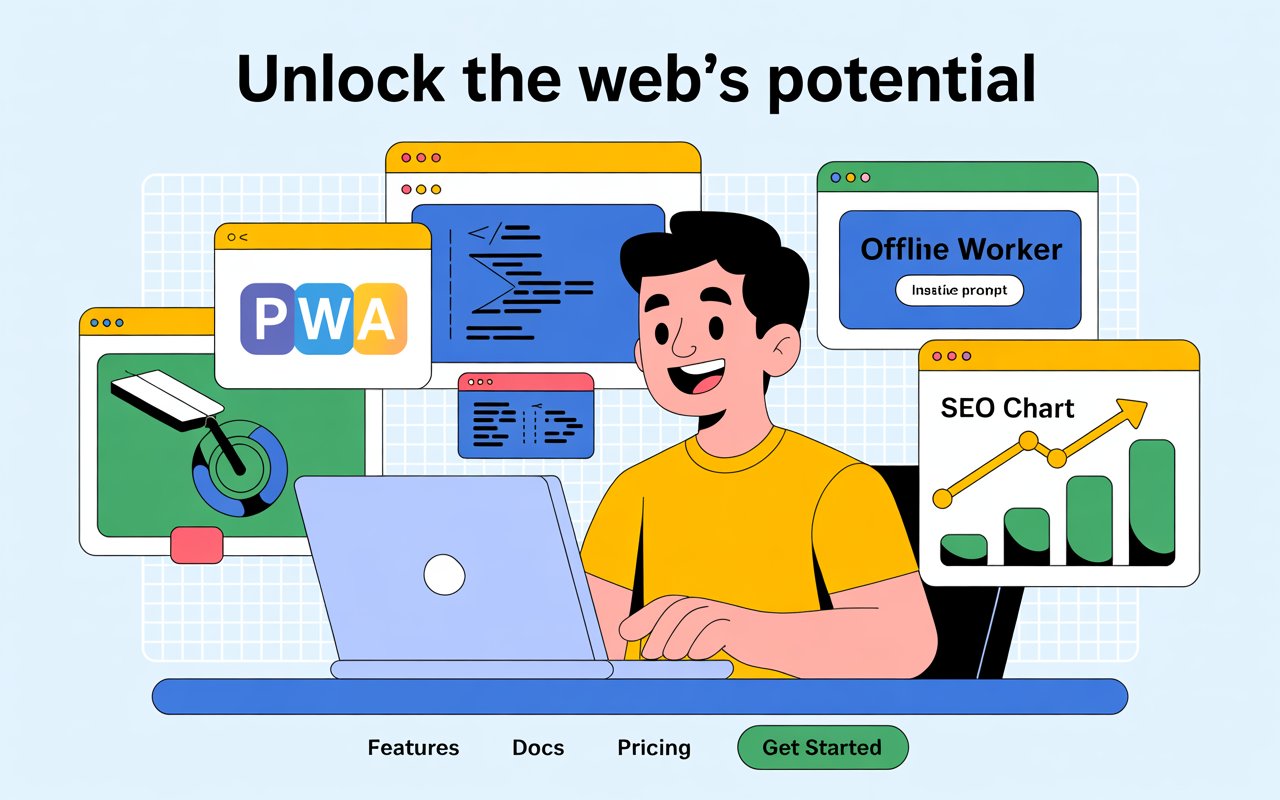Progressive Web App Development (PWAs)
Published on 2025-08-30

Progressive Web App (PWA) Development – A Complete Guide 🚀
Introduction:
Progressive Web Apps (PWAs) are web applications that use modern web capabilities to deliver an app-like experience to users. They work offline, load instantly, and can be installed on the user's device—offering the best of both web and mobile worlds. In this guide, we’ll walk you through PWA development, SEO considerations, and performance optimization tips.
What is a PWA?
A Progressive Web App is:
- Reliable – Loads instantly, even in uncertain network conditions.
- Fast – Responds quickly to user interactions with smooth animations.
- Engaging – Feels like a natural app on the device with a full-screen experience.
PWAs are powered by technologies like service workers, web app manifests, and responsive design.
Key Benefits of PWAs:
- Offline access through caching
- App-like UX with add-to-home-screen prompts
- Push notifications for re-engagement
- Improved performance and load speed
- No need for App Store/Play Store publishing
- Lower development cost than native apps
Core Technologies Used:
- HTML, CSS, JavaScript
- Service Workers
- Web App Manifest
- HTTPS (mandatory for PWAs)
- Frameworks: React, Next.js, Angular, Vue, Svelte, etc.
Step-by-Step: How to Build a PWA
1. Build a Responsive Web App
Ensure your site is mobile-friendly and responsive on all devices.
2. Serve over HTTPS
Use an SSL certificate to ensure secure connections.
3. Add a Web App Manifest
This JSON file defines how your app appears to the user (name, icons, theme color, etc.).
4. Register a Service Worker
Write a script to handle caching, offline support, and background processes.
5. Enable Add to Home Screen
Implement logic to prompt users to install the app.
6. Test using Lighthouse (Chrome DevTools)
Validate PWA compliance and performance score.
SEO for PWAs: Make It Discoverable
PWAs often run on client-side frameworks (React, Angular), which can be problematic for search engines. Follow these strategies:
1. Use Server-Side Rendering (SSR)
Frameworks like Next.js and Nuxt.js support SSR, which improves crawlability.
2. Implement Dynamic Rendering
Serve pre-rendered content to crawlers using tools like Rendertron or Puppeteer.
3. Avoid Fragment URLs
Use clean, unique, and crawlable URLs for every page.
4. Set Canonical Tags
Prevent duplicate content issues by specifying the canonical version of each page.
5. Add Structured Data
Use Schema.org to enhance rich results (e.g., articles, products, events).
6. Optimize Meta Tags
Include relevant title, meta description, Open Graph, and Twitter Card tags.
7. Check Robots.txt and Sitemap
Ensure your service worker and JS files are not blocked from crawling.
Best Practices for Performance
- Minimize JS and CSS files
- Enable lazy loading of images and components
- Use modern image formats (WebP, AVIF)
- Defer non-critical scripts
- Use a Content Delivery Network (CDN)
- Monitor performance using Google Lighthouse & Core Web Vitals
Real-World Examples of PWAs
- Twitter Lite – 70% reduction in data usage
- Starbucks – Works offline and is installable
- Flipkart – 3x more time spent by users
- Pinterest – 40% increase in engagement
Conclusion:
Progressive Web Apps are the future of web development, combining speed, engagement, and installability. With proper SEO implementation, PWAs can rank well on Google, boost user experience, and reduce bounce rates. Whether you're building from scratch or converting an existing app, now is the time to go progressive.
Let’s Build Something Great Together. 🤝
Here is what you will get for submitting your contact details.
Benefits of Contacting Us
- 45 minutes of free consultation
- A strict non-disclosure agreement
- Free market & competitive analysis
- Suggestions on revenue models & planning
- Detailed feature list document
- No obligation proposal
- Action plan to kick start your project